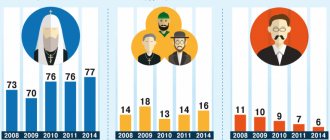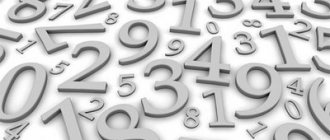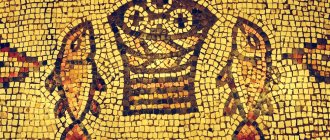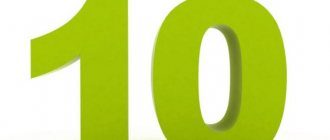| It is proposed to rename this page. Explanation of reasons and discussion - on the Wikipedia page: Towards renaming/November 24, 2019 . |
This term has other meanings, see Number (meanings).
Tower clock with Cyrillic numerals in Suzdal Reverse of a silver half-ruble coin (left) and a copper beard badge for paying the beard tax (right). On both coins the year of issue (1705) is indicated in Cyrillic (҂АѰЕ).
| Number systems in culture | |
| Indo-Arab | |
| Arabic Tamil Burmese | Khmer Lao Mongolian Thai |
| East Asian | |
| Chinese Japanese Suzhou Korean | Vietnamese Counting Sticks |
| Alphabetical | |
| Abjadia Armenian Aryabhata Cyrillic Greek | Georgian Ethiopian Jewish Akshara-Sankhya |
| Other | |
| Babylonian Egyptian Etruscan Roman Danube | Attic Quipu Mayan Aegean Symbols of the KPPU |
| Positional | |
| , , , , , , , , , , | |
| Nega-positional | |
| Symmetrical | |
| Mixed systems | |
| Fibonacci | |
| Non-positional | |
| Unit (unary) | |
Number writing system in Cyrillic
,
tsifir
- a method of alphabetically recording numbers using the Cyrillic or Glagolitic alphabet [
clarify
], used in Russia since the 10th century.
In its main features it is similar to the Greek system of notation of numbers.
It was used in Russia until the beginning of the 18th century, when it was replaced by a number recording system based on Arabic numerals.
Currently used in books in Church Slavonic.
Units, tens and hundreds
Examples of writing numbers in Cyrillic
Most of the letters of the Old Russian alphabet had a numerical correspondence. So, the letter “” meant “one”, “Vedi” - “two”... Some letters did not have numerical correspondences. Numbers were written and pronounced from left to right, with the exception of numbers from 11 to 19 (for example, 17 - seven-ten
).
The system of writing numbers in the Glagolitic alphabet was built on the same principle, in which Glagolitic letters were used.
At the beginning of the 18th century, a mixed system of notating numbers was sometimes used, consisting of both Cyrillic and Arabic numerals. For example, on some copper half coins (coins in denomination of ¼ kopek) the date 17K (1720) and 17K1 (1721) are minted.
Letters to numbers table
| This section is missing references to information sources. Information must be verifiable, otherwise it may be questioned and deleted. You may edit this article to include links to authoritative sources. This mark was set on August 19, 2021 . |
The system of writing numbers in Cyrillic almost reproduces the Greek one letter for letter. In the Glagolitic alphabet, those letters that are absent in Greek (beeches, live, etc.) also have numerical values. In the Church Slavonic version, which is still used today, it has the following form:
| Arabic number | Greek alphabet | Cyrillic | Glagolitic | ||
| Α, α | A (az) | A (az) | |||
| Β, β | B (lead) | B (beeches) | |||
| Γ, γ | G (verb) | B (lead) | |||
| Δ, δ | D (good) | G (verb) | |||
| Ε, ε | E (is) | D (good) | |||
| Ϛ, ϛ (stigma) | S (green) | E (is) | |||
| Ζ, ζ | Z (ground) | F (live) | |||
| Η, η | And (like) | S (green) | |||
| Θ, θ | Ѳ (phyta) | Z (ground) | |||
| Ι, ι | I(s) | I(s) | |||
| Κ, κ | K (kako) | And (like) | |||
| Λ, λ | L (people) | Ћ (herv) | |||
| Μ, μ | M (thinking) | K (kako) | |||
| Ν, ν | N (our) | L (people) | |||
| Ξ, ξ | Ѯ (xi) | M (thinking) | |||
| Ο, ο | Oh (he) | N (our) | |||
| Π, π | P (peace) | Oh (he) | |||
| Ϟϟ (coppa) | H (worm) | P (peace) | |||
| 100 | Ρ, ρ | R (rtsy) | R (rtsy) | ||
| 200 | Σ, ς | C (word) | C (word) | ||
| 300 | Τ, τ | T (hard) | T (hard) | ||
| 400 | Ο, ο and Υ, υ | U (uk) | U (uk) | ||
| 500 | Φ, φ | F (fert) | F (fert) | ||
| 600 | Χ, χ | X (dick) | X (dick) | ||
| 700 | Ψ, ψ | Ѱ (psi) | Ѡ (from) | ||
| 800 | Ω, ω | Ѡ (omega) | Shch (shata) | ||
| 900 | Ϡϡ (sampi) | Ts (tsy) | Ts (tsy) | ||
| 1000 | — | ҂а | H (worm) | ||
System Features
Main article: Alphabetical notation of numbers
Lowercase letters were used almost exclusively to write numbers.
The numerical value 5 was originally carried by the ordinary letter “e”, the so-called “narrow e”, but since, according to Church Slavonic orthography, it could not stand at the beginning of a word or in isolation, later its other variant “e”, the so-called “wide e”, began to be used , from which the Ukrainian letter “є” subsequently developed.
For the numerical value 6 in ancient times, both the usual letter “zelo” (S) and a mirror inverted one were used.
The letter “i” in numerical use does not have dots.
For the same reason as for 5, for the numerical value 70 it is usually not the usual letter “o” that is used, but its so-called “wide” variant ѻ (in Unicode, due to a misunderstanding, called “round omega”, English round omega).
The meaning of 90 in the most ancient Cyrillic texts was expressed not by the letter “ch”, but by the sign “koppa” (ҁ), borrowed from Greek.
The value of 400 in ancient times was expressed by the letter “Izhitsa” (ѵ), later the so-called “ik” - a y-shaped sign, used only as a numeric sign and as part of the digraph “uk” (“ou”). The use of “ika” in the numerical value is typical for Russian publications, and “izhitsy” is typical for early printed Ukrainian, later South Slavic and Romanian ones.
In the value 800, both the “naked omega” (ѡ) and (more often) the compound sign “from” (ѿ) could be used; For more details, see the article “Omega (Cyrillic)”.
The value of 900 in ancient times was expressed by “small yus” (ѧ), somewhat similar to the corresponding Greek letter “sampi” (Ϡ); later the letter “ts” began to be used in this meaning.
Title
Examples of recording monetary amounts without a title (Act of redistribution of copper into coins of the early 18th century)
Main article: Title
To distinguish letters from numbers, a special sign was written above letters with a numerical value - title. This sign could be placed above each letter, or it could be long and cover the entire number.
In the first printed Bible (XVI century), in two-digit and multi-digit numbers the title was placed above the second letter from the beginning.
Since the 19th century, a tradition has developed in book printing in two-digit and multi-digit numbers to place the title above the second letter from the end.[1]
In the case of monetary amounts, the title was sometimes replaced by the superscript ligature “ru”, “de” or the letter “a”, respectively, with the symbols of the ruble, dengi or altyn.
Tens and hundreds of thousands, millions
| This section is missing references to information sources. Information must be verifiable, otherwise it may be questioned and deleted. You may edit this article to include links to authoritative sources. This mark was set on August 19, 2021 . |
Large numbers (tens and hundreds of thousands, millions and billions) could be expressed not through the sign “҂”, but by a specially outlined letter used to denote units. However, for large numbers these notations were quite unstable.
Dark
To signify darkness
the letter was surrounded by a solid circle.
- Small account - ten thousand ( 10 4 {\displaystyle 10^{4}} ) or one hundred thousand[ source not specified 2082 days
] ( 10 5 {\displaystyle 10^{5}} ); - The great count is a thousand thousand
, a million (10 6 {\displaystyle 10^{6}} , great darkness).
From the word darkness comes the military rank temnik - a major military leader. Temnik was, for example, Mamai.
darkness probably originated
as the name of number, and myriad (ancient Greek μῡριάς, μῡριάδος).
Legion (ignorant) or Legion (ignorant)
See also: My name is Legion
To designate a legion
(
ignorance
) the letter was circled with dots or the number was written as follows:
.
- Small count - ten topics
, or one hundred thousand ( 10 5 {\displaystyle 10^{5}} ); - The great count is the darkness of those
, or a trillion (10 12 {\displaystyle 10^{12}}).
Leodr
To denote leodre
the letter was circled with dashes or commas, or written in a third way:
or written in the fourth way:
- Small count - ten legions
, or a million ( 10 6 {\displaystyle 10^{6}} ); - The great count is a legion of legions
, or septillion (10 24 {\displaystyle 10^{24}}).
Raven (raven)
To designate
a corvid
(
crow
), the letter was circled with crosses;
or to the right and left of the letter the letters k
, and a title was depicted above the letter;
- Small account - ten leodres
, or ten million ( 10 7 {\displaystyle 10^{7}} ); - The grand count is leodr leodrov
, or quindecillion (10 48 {\displaystyle 10^{48}}).
Treasure (deck)
The letter was enclosed in square or round brackets, but not on the right and left, as with ordinary letters, but on top and bottom.
- Small count - ten corvids
, or one hundred million ( 10 8 {\displaystyle 10^{8}} ); - The grand count is ten corvids
, or 10 quindecillion (10 49 {\displaystyle 10^{49}}).
Darkness of topics
The largest number is the darkness of topics
.
- Small count - ten decks
, or a billion ( 10 9 {\displaystyle 10^{9}} );[2][3][4] - The great count is ten decks
, or 100 quindecillion (10 50 {\displaystyle 10^{50}}, great darkness).[
source not specified 2087 days
]
In small counting, the number served as the last limit of natural (correlated with any activity) counting. The darkness is infinite, innumerable.
For example, in the Apocalypse: “The number of cavalry troops was two thousand
(Ancient Greek: δισ-μυριάδες μυριάδων); and I heard his number” (Rev. 9:16).
Alphanumeric number
To distinguish a number from its corresponding letter, a special icon was used - a title. This icon was drawn above the letters; it looked like a wavy line. If a letter was written without a title, it denoted a sound, and if a wavy line appeared on top, it was read as a number.
Find out what awaits you today - Horoscope for today for all zodiac signs
Due to numerous requests from subscribers, we have prepared an accurate horoscope application for mobile phones. Forecasts will arrive for your zodiac sign every morning - it's impossible to miss! Download for free: Daily Horoscope 2020 (available on Android)
The method of using titlo to indicate numbers was passed on to the Slavs by Cyril and Methodius, who created the Slavic alphabet based on the Greek. Did the sharp and rounded edges of the titlo matter? This is just a matter of calligraphy, which does not carry any meaning. Both options are correct.
Table of correspondence between Slavic letters and numbers:
However, not all letters of the alphabet were used for numbering. For example, the letters “g” and “b” were not used for calculus. Ignoring individual sounds is due to their absence in the Greek alphabet: for Cyril and Methodius these sounds were unusual.
On a note! In the old days, numbering started from one, not from zero.
Single-digit numbers were written with one letter, and two-digit numbers with two.
The following symbols were used to denote tens:
Hundreds are designated as follows:
If it was necessary to write down a complex number of three or more digits, several letters were used under a common title. If it was necessary to indicate numbers exceeding the number 10,000, other signs and designations were used:
- the letter Az in a circle meant 10,000 (darkness);
- the letter Az in a circle with dots denoted a legion - 100,000;
- the letter Az in a circle with commas denoted leodr (million).
Sometimes images of composite numbers had to be learned by heart, which caused many problems for students of parochial schools.
The picture shows the writing of large numbers in the Slavic version:
There was another designation - enchantment. It meant trillions.
Numbers from letters were separated by dots. Sometimes dots were placed between the numbers themselves in order to separate one from the other (ts.i.f.r.a.).
Notes
- Hieromonk Alipy (Gamanovich). Grammar of the Church Slavonic language. - M.: Fiction, 1991. - § 5.
- Hieromonk Alipy (Gamanovich). Grammar of the Church Slavonic language. — M.: Fiction, 1991. p. 23
- Grammar Learning Old Russian - counting Archived copy of March 4, 2021 on the Wayback Machine (inaccessible link) Archived May 4, 2021. Retrieved September 28, 2021.
- A. E. Smirnova Church Slavonic language in tables. Church account. page 8
Where was it used?
Writing numbers in letters can be found in ancient documents and on coins. For example, the numbers are clearly visible on coins from the era of Peter the Great; they were minted until 1723. Now these coins are rare and are in private collections and museums.
Church Slavonic numbers:
Clerks of the tsarist era had to have not only knowledge of the alphabet, but also know by heart all the compound numbers of letters and the rules for writing them. Writing dates in letters was especially difficult. For ordinary people, knowledge of this level was inaccessible.
It is noteworthy that this numbering is still used today within the Church Slavonic language by seven Orthodox churches. There are no zeros or negative numbers in this system. Our ancestors believed that zero symbolizes primeval chaos, when the earth had not yet been created. Therefore, using this number was not considered reasonable and rational.
On a note! For arithmetic operations of addition and subtraction, special abacus boards were used. They resembled the wooden abacus used by cashiers and accountants in the 20th century.
The digital use of letters opens up wide horizons for gematria and numerology, which is what Jewish Kabbalists did. The digital equivalent of the word was viewed from the mystical side and already had a sacred meaning and significance.
However, after the reforms of Peter the Great, the alphabetic numbers were replaced by Arabic numerals, which we use to this day. This more convenient spelling is used all over the world.









